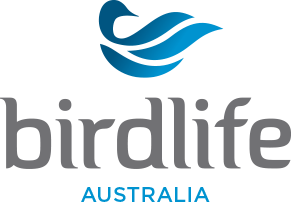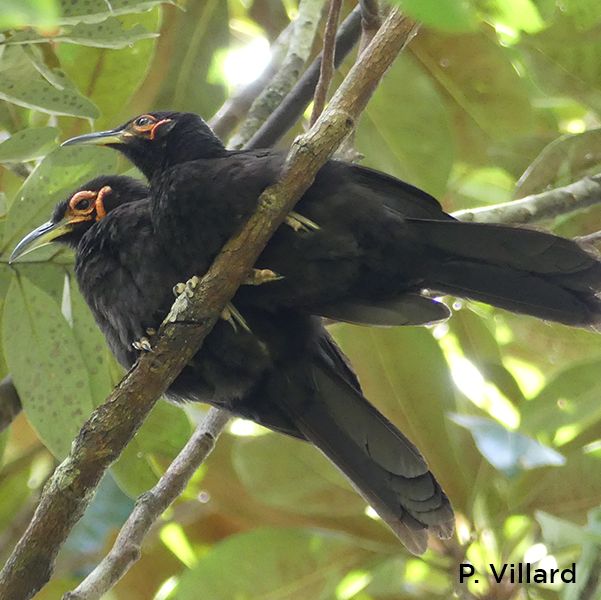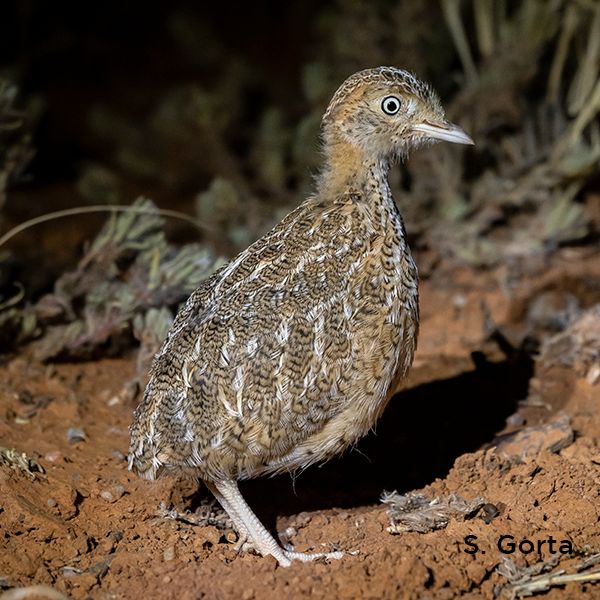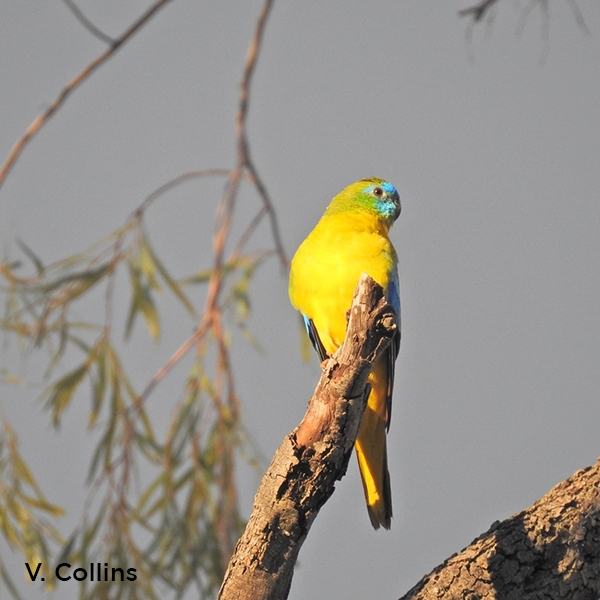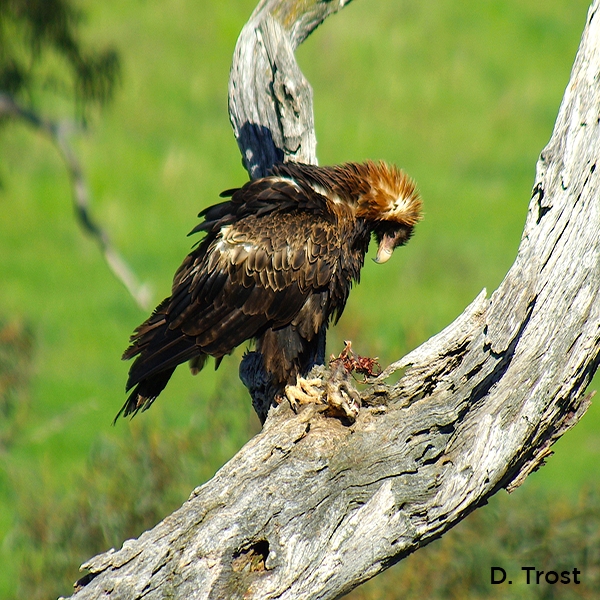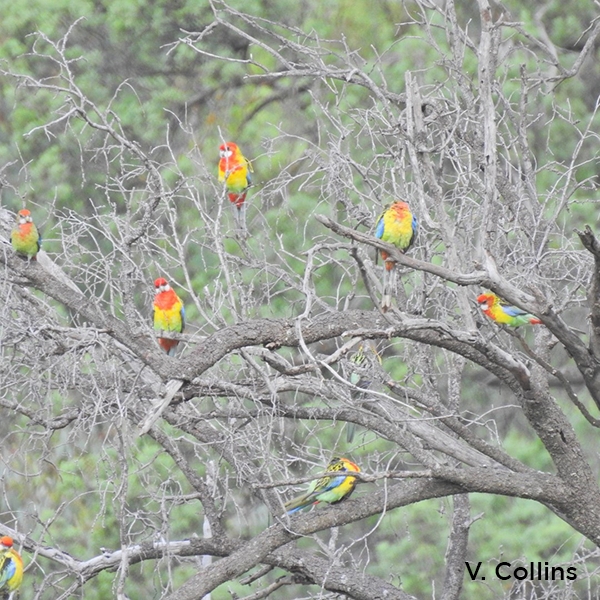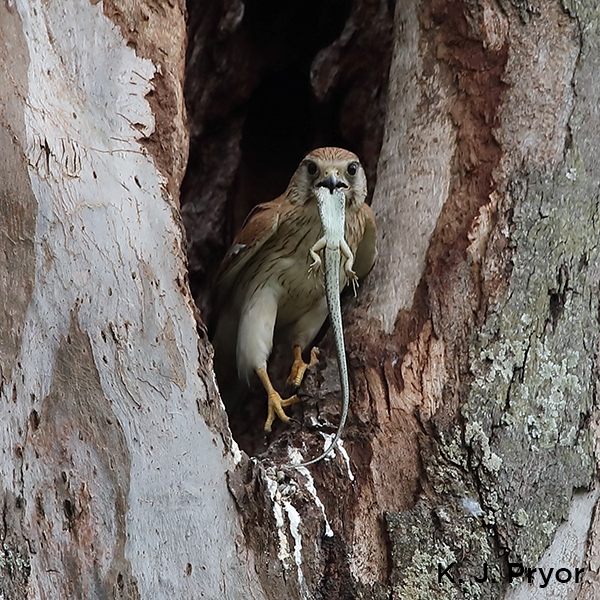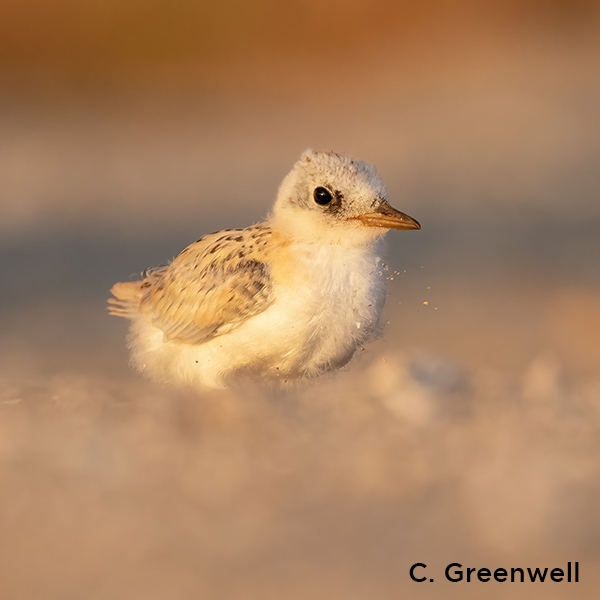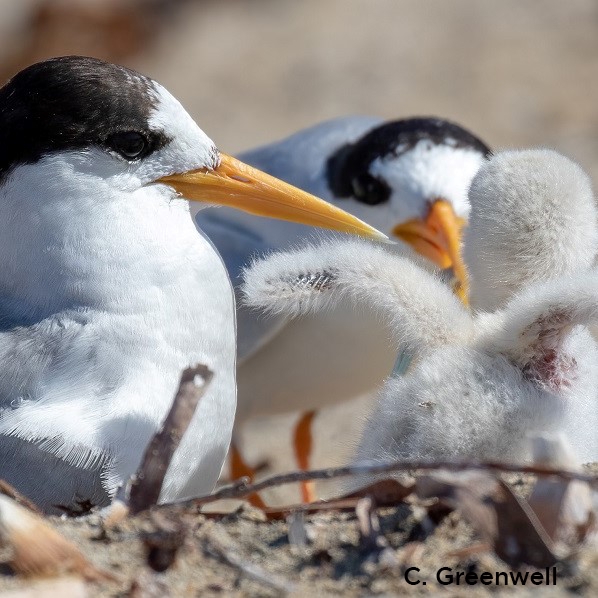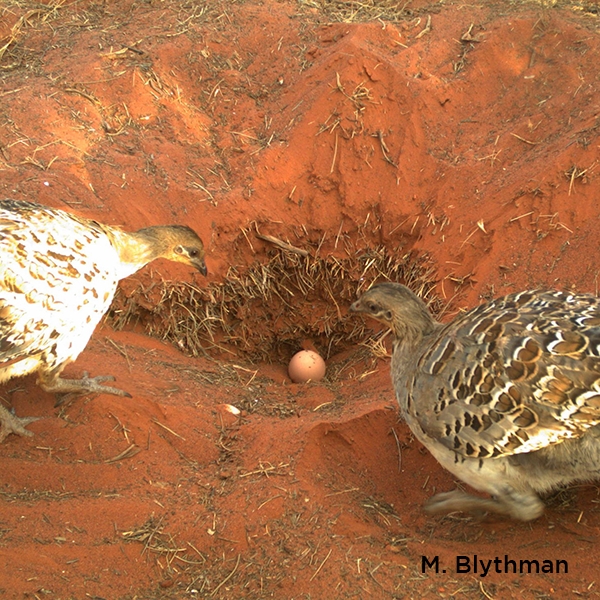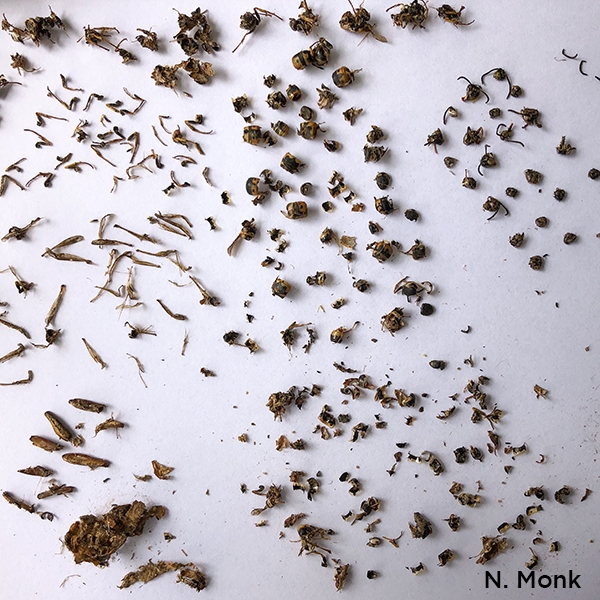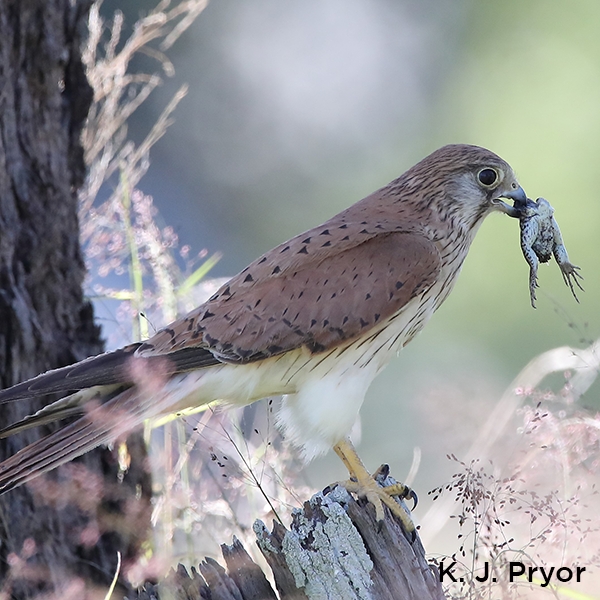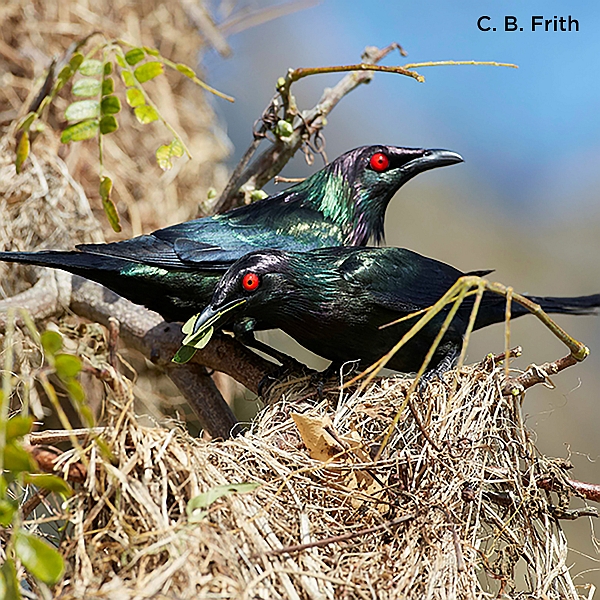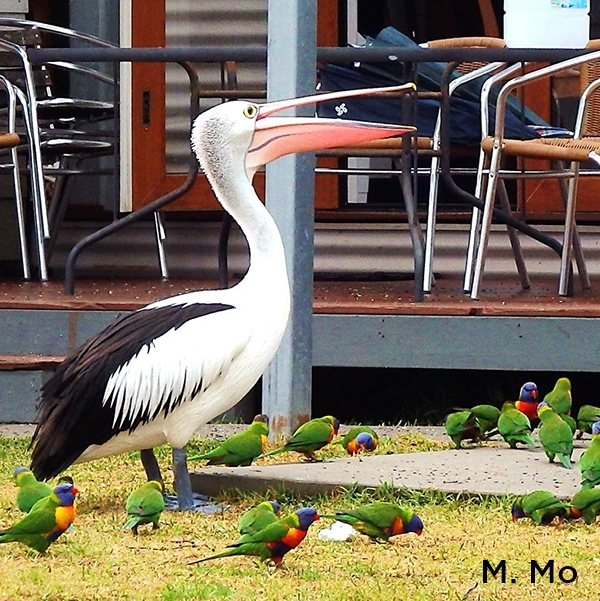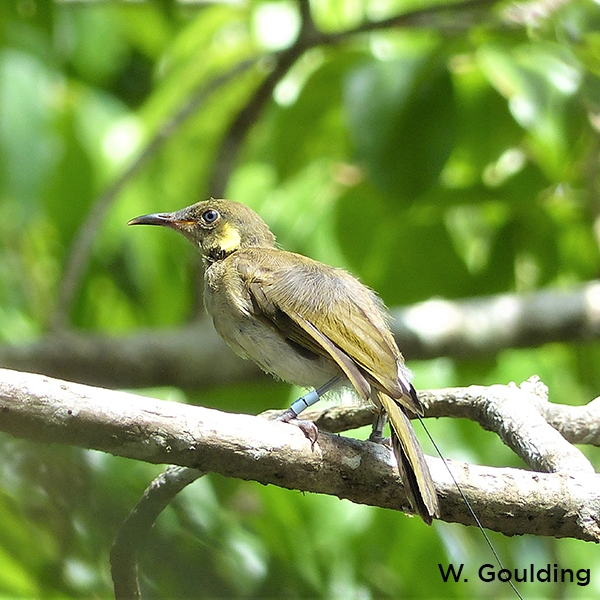Breeding behaviour in the Spangled Drongo Dicrurus bracteatus
Allan Briggs
pp. 83-89
Abstract
Over a period of five breeding seasons (between November 2008 and January 2013) the breeding behaviour—including nest-site selection, nest building, incubation and care of nestlings and fledglings—of the Spangled Drongo Dicrurus bracteatus was observed at Coowonga on the central Queensland coast, and from this the breeding success was estimated. The breeding season was from November to January, with a consistent start date from year to year. The incubation and nestling periods were also consistent from year to year. A nest was generally positioned in a tree near a clearing and in the outer part of that tree. Several factors contributed to nest-site selection: nest-tree species, habit and height, diameter of the tree’s outer branches, availability of dead branches, proximity of the nest-tree to a clearing and to water, and height of the nest above the ground. New findings were the frequent attachment of a nest to dead twigs and the consistent placement of a nest on the first branch below the spreading canopy of the tree. The occurrence of colonial breeding was more difficult to determine, with many features of this behaviour (such as group nesting and co-operative defence against predators) being evident, but nests were widely dispersed over a large area. Rotation of nest-sites may be used to minimise predation, with some Drongos using a nest-site one year, but not the next, and then returning to that nest-site the following year.
References
Banfield, E.J. (1908). The Spangled Drongo-shrike. Emu 7, 178–181.
Beruldsen, G.R. (1980). A Field Guide to Nests and Eggs of Australian Birds. Rigby, Brisbane.
Blakers, M., Davies, S.J.J.F. & Reilly, P.N. (1984). The Atlas of Australian Birds. Melbourne University Press, Melbourne.
Burton, R. (1985). Bird Behaviour. Granada, London.
Campbell, B. & Lack, E. (Eds) (1985). A Dictionary of Birds. T & A.D. Poyser, Staffordshire, England, UK.
Centre for Plant Biodiversity Research (2006). EUCLID: Eucalypts of Australia. 3rd edn. CSIRO Publishing, Melbourne. [DVD].
Cooper Creek Wilderness (2010). Report of Spangled Drongo nesting. Previously on website http://coopercreek.com.au/.Posting now archived.
Ehrlich, P.R., Dobkin, D.S. & Wheye, D. (1988). Coloniality. Available online:https://web.stanford.edu/group/stanfordbirds/text/essays/Coloniality.html (retrieved 20 March 2015).
Elkins, N. (2010). Weather and Bird Behaviour. A & C Black, London.
Gould, J. (1865). Handbook to the Birds of Australia. Author, London.
Gwinner, E. (2003). Circannual rhythms in birds. Current Opinion in Neurobiology 13, 770–778.
Higgins, P.J., Peter, J.M. & Cowling, S.J. (Eds) (2006). Handbook of Australian, New Zealand & Antarctic Birds, Volume 7: Boatbill to Starlings. Oxford University Press, Melbourne.
Holland, L. (1967). Field-notes on the Spangled Drongo. Australian Bird Watcher 3, 37–38.
King, D. & Green, B. (1999). Goannas: The Biology of Varanid Lizards. University of New South Wales Press, Sydney.
Lack, D. (1968). Ecological Adaptation for Breeding in Birds. Methuen, London.
Le Souef, D. (1902). Descriptions of birds’-eggs from the Port Darwin district, northern Australia. Emu 2, 85–96.
Longmore, N.W. & Scoular, R.M. (1989). A display of the Spangled Drongo Dicrurus bracteatus. Corella 13, 160–161.
Mathews, G.M. (1914). List of the birds of Melville Island, Northern Territory, Australia. Ibis 56, 91–132.
Morcombe, M. (2003). Field Guide to Australian Birds. Steve Parish Publishing, Brisbane.
Murray, B.G. (2000). Measuring annual reproductive success in birds. Condor 102, 470–473.
North, A.J. (1892). Supplement to the descriptive catalogue of “Nests and Eggs of Birds Found Breeding in Australia and Tasmania” [Part II]. Records of the Australian Museum 2 (1), 11–22, plates ii–iii.
Perrins, C.M. (1970). The timing of birds’ breeding seasons. Ibis 112, 242–255.
Pizzey, G. (1980). A Field Guide to the Birds of Australia. Collins, Sydney.
Robertson, J.S. (1967). Movements of the Spangled Drongo. Australian Bird Bander 5, 5.
Thomson, A.L. (1965). A New Dictionary of Birds. Nelson, London.
Verhulst, S. & Nilsson, J. (2008). The timing of birds’ breeding seasons: A review of experiments that manipulated timing of breeding. Philosophical Transactions of the Royal Society B 363, 399–410.
Vernon, D.P. (1968). Birds of Brisbane and Environs. Queensland Museum Booklet 5, Queensland Museum, Brisbane.
Wikelski, M., Martin, L.B., Scheuerlein, A., Robinson, M.T., Robinson, N.D., Heim, B., Hau, M. & Gwinner, E. (2008). Avian circannual clocks: Adaptive significance and possible involvement of energy turnover in their proximate control. Philosophical Transactions of the Royal Society B 363, 411–423.
Wittenberger, J.F. & Hunt, G.L. (1985). The adaptive significance of coloniality in birds. In: Farner, D.S., King, J.R. & Parkes, K.C. (Eds). Avian Biology 8, pp. 1–78. Academic Press, New York.
Wood, K.A. (1996). Breeding records of the Spangled Drongo Dicrurus bracteatus. Sunbird 26 (2), 25–35.
